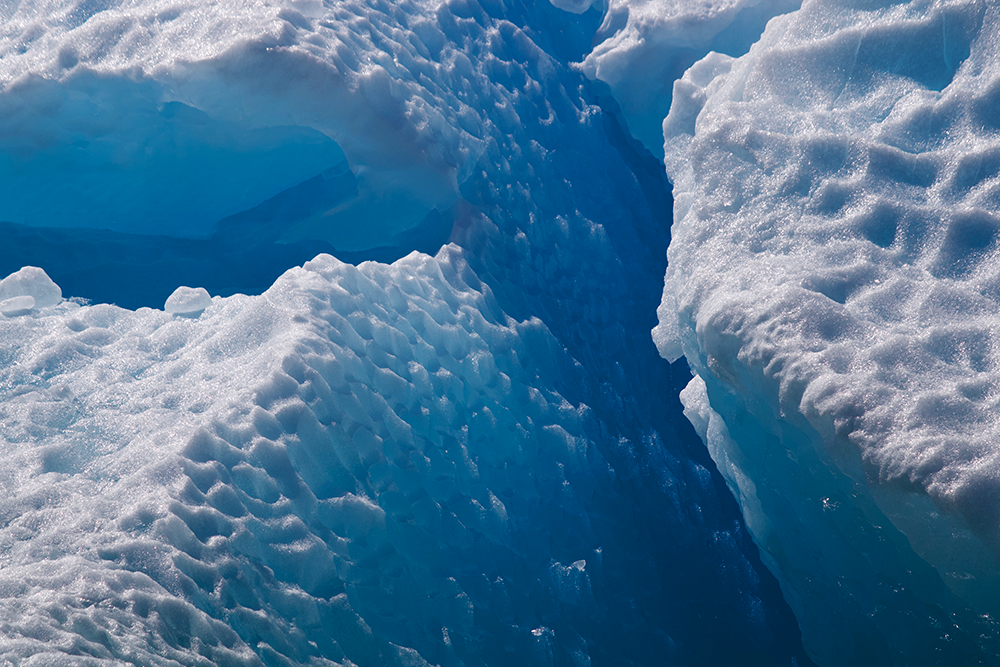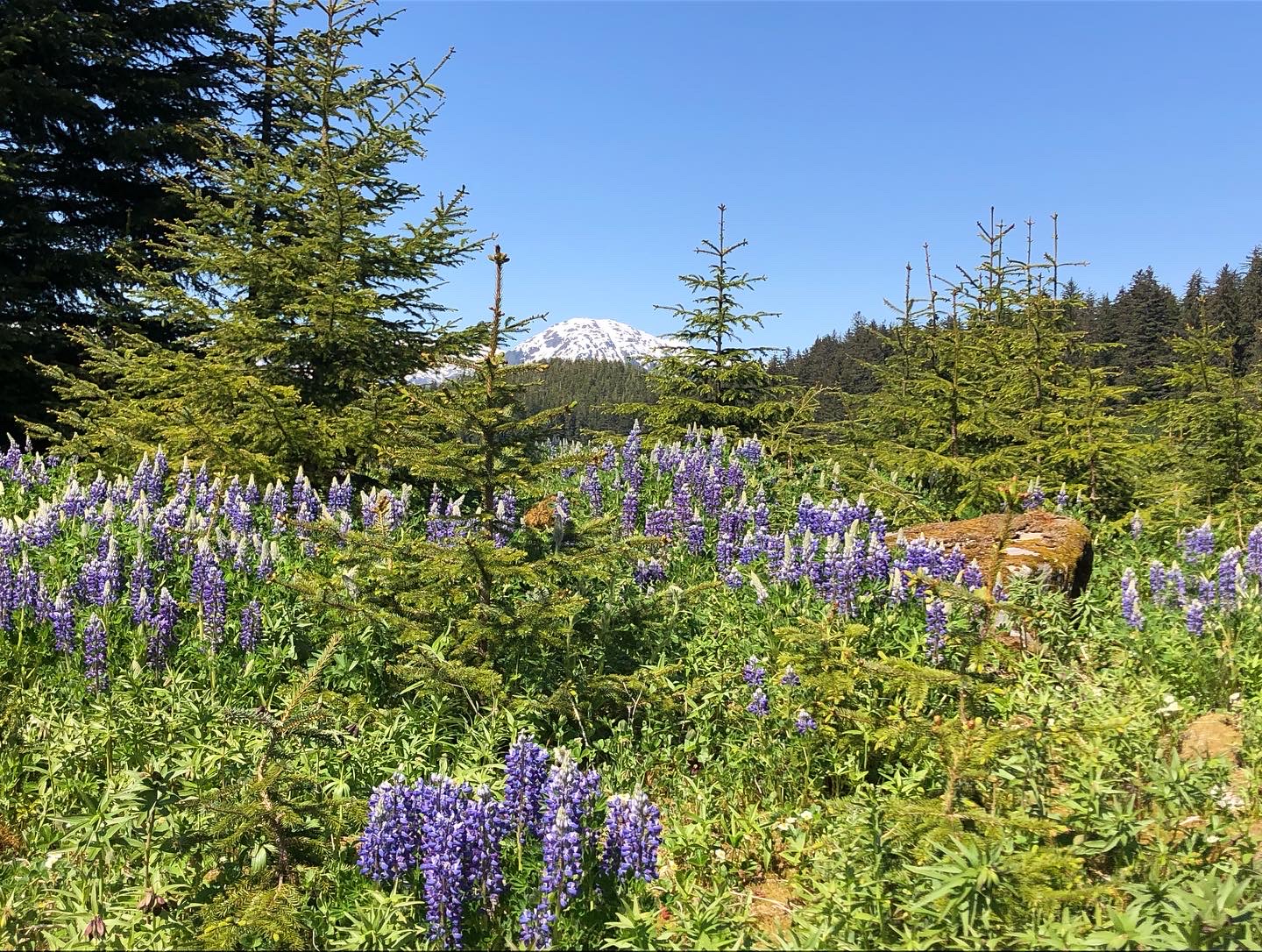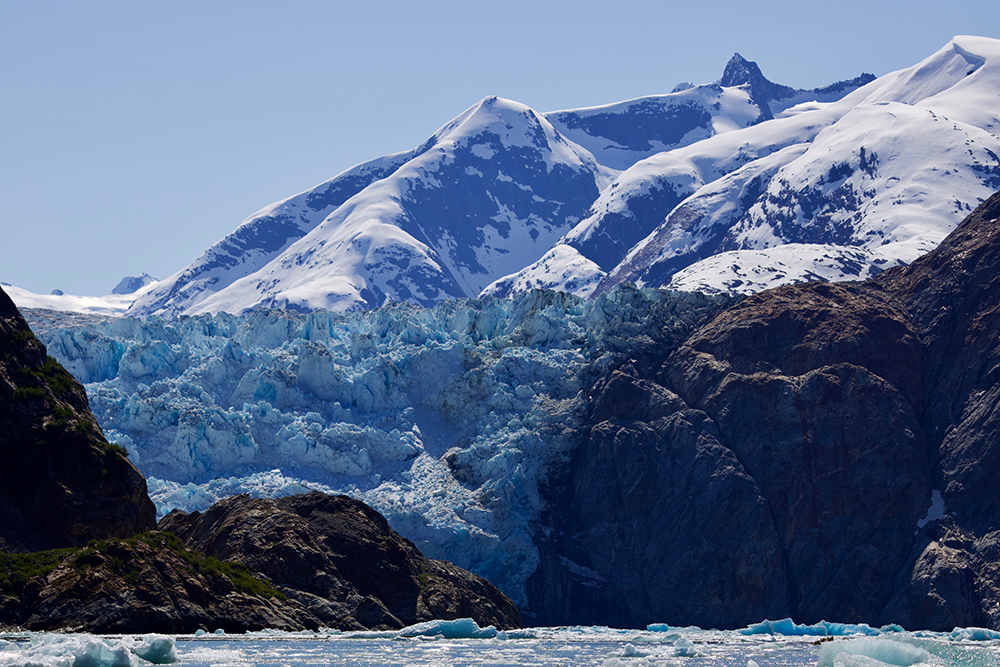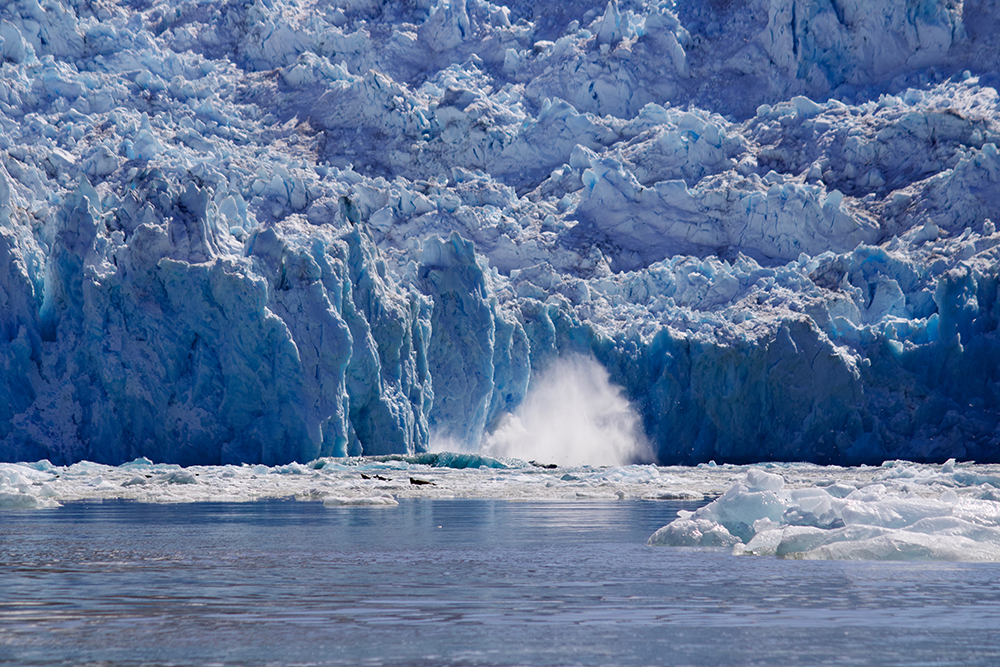
Up close with the deep blue of glacial ice. (Lisa Palmer/Planet Forward)

Up close with the deep blue of glacial ice. (Lisa Palmer/Planet Forward)
I walked the edge of tidal flats in the wilds of Glacier Bay National Park in Alaska alongside fresh bear tracks and placed my hands in their massive depressions. This off-trail hike had taken us along a meadow blooming with lupines and chocolate lilies. We observed the succession of plants that now grow around a pond formed when the glacier retreated less than 300 years ago. It’s now ringed by hemlock and Sitka spruce trees. Over the ridge, far in the distance, we could see the new terminus of Brady Glacier, the largest ice stream in the Fairweather Mountain Range that gets its start some 35 miles inland. On this last full day in Southeast Alaska with the 2022 Storyfest winners, under a week-long stretch of blue skies, I’ve never been so motivated to encourage others to experience new landscapes.

If you want to observe change and see how humans affect the world, go to the edges. Whether it’s a natural landscape, a community, or a feeling inside you, spending time on life’s boundaries can transform your perspective. In ecological terms, edges are zones of transition from one ecosystem to another, where you can see dynamics and changes in species and activity that can explain, for instance, how some generalist plants thrive and others don’t. Planet Forward’s contingent traveled to the edge of Southeast Alaska, visiting its remote glacier-filled landscape, fjords, and islands with Lindblad Expeditions.
As a journalist covering environmental change and looming climate crisis over the past 23 years, I’ve hiked 100 miles along the Continental Divide in Wyoming, accompanied a seedbank expedition in the Andes of Colombia, lived for two weeks at a remote biological research station in the Peruvian Amazon near Bolivian and Brazilian borders, sailed from the North Atlantic to the Caribbean, and walked through rice paddies of northern Punjab, in India, reporting on the water adaptations near the Pakistan border. In each instance, the location mattered. My stories covered the consequences of human actions on the people, food, and nature because these were places on some edge.

“Whenever possible, go into the field,” I tell my science journalism students, “to a place where you can report what you see. What does it tell you?” Place-based reporting has been harder in this time of COVID-restricted travel, soaring fuel costs, and canceled flights. This trip with Planet Forward’s Digital Editor Victoria Middleton and our Storyfest Winners was a welcome return to the field, a chance to work with environmental storytellers to find their inspiration, and to experience a landscape where Lindblad naturalists shed light on the world around us.

Wild places are capable of making us feel small, yet they are places where humanity’s footprint is disproportionately large and visible.
More of the world’s boundaries are at risk from human development and have proven to be at further risk from climate change, and so it’s important for those reporting on the natural world to spend time in it. Alaska is being transformed by climate change at a rapid pace. Temperatures have warmed more than 3 degrees Fahrenheit, more than twice the warming seen in the rest of the United States. Annual precipitation is increasing by 10%. Late summer Arctic sea ice has decreased significantly — it’s predicted that Arctic waters in summer will be free of ice by 2050. Still, Alaska remains a source of resilience with its adaptation planning centered regionally.

We often turn away from news and images of climate destruction and environmental change, like the melting glaciers and dying animals that attest to the challenges of our sustainable future. But going to wild places focuses our attention on the forgotten beauty worth protecting, the precious intact environment teeming with life. That week in Alaska, I saw a brown bear foraging for barnacles on the beach at dawn; humpback whales cooperatively feeding by forming “nets” by blowing bubbles; sea lions feasting on schools of fish; the marbled murrelet seabird, which takes its first flight to shore from its nest high in the old growth forest several miles away; and a mother sea otter diving for fish, surfacing with her pup on her chest to share in the catch.
This natural richness asks us — in all its beauty — to look at its strength of resilience and reflect on our own. Wild places are capable of bouncing back. So are we. In 2015, the world came together and agreed to limit emissions that lead to an extreme and unpredictable climate future. It’s now time for us to deliver the goals we set to build a peaceful, more resilient planet — starting at the edges.
––
Editor’s Note: Lindblad Expeditions, our Planet Forward Storyfest Competition partner, made this series possible by providing winners with an experiential learning opportunity aboard one of their ships. All editorial content is created independently. We thank Lindblad Expeditions for their continued support of our project. Read all the stories from the expedition in our Astonishing Alaska series.